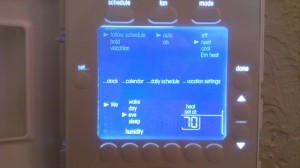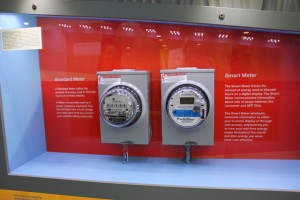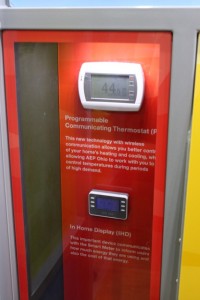 Last Wednesday I had the pleasure of speaking about my vision for a net-zero homestead (more about that soon) at a 'Make the Switch' fundraiser for Green Energy Ohio. I expected to be a little nervous, speak too quickly, visit with like-minded folks, and enjoy Cafe Bella's fascinating small-space edible gardening. I didn't expect to find out that people who want to support alternative energy can do so within their current AEP electric service. Even better, the switch usually saves money!
The deal is that AEP offers customers a choice of providers. You are probably well aware of this if you are an AEP customer because these providers send mail constantly encouraging you to switch. Most of them are competing on price alone. A few providers are competing on values - they provide energy by wind instead of coal.
Last Wednesday I had the pleasure of speaking about my vision for a net-zero homestead (more about that soon) at a 'Make the Switch' fundraiser for Green Energy Ohio. I expected to be a little nervous, speak too quickly, visit with like-minded folks, and enjoy Cafe Bella's fascinating small-space edible gardening. I didn't expect to find out that people who want to support alternative energy can do so within their current AEP electric service. Even better, the switch usually saves money!
The deal is that AEP offers customers a choice of providers. You are probably well aware of this if you are an AEP customer because these providers send mail constantly encouraging you to switch. Most of them are competing on price alone. A few providers are competing on values - they provide energy by wind instead of coal.
I believe in renewable energy and was excited to know that our household can choose wind with no windmill on our property or difficulty beyond paying the regular electric bill.
How can our electric be powered by wind? Of course the actual electrons coming into my house will likely still be generated by coal. But choosing 100% wind means that our provider (AEP Energy 100% Wind) buys green energy credits from a wind farm versus buying energy from a fossil fuel power plant. As more people choose 100% wind, more green energy credits will be purchased and the wind farms will grow. Enough demand will support building wind farms nearer to home and eventually the juice coming to our house will be from wind.
The good folks at Go Sustainable! Energy brought this revelation to light. Greg, one of their green energy gurus, explains further:
"In AEP-Ohio territory, you have four primary components of your bill: Generation, Transmission, Distribution, and Service charge. Due to de-regulation, when you switch your provider the only effect on your bill is that your generation and transmission charges are removed from the AEP-Ohio portion of the bill and are relocated to your new provider. If you do the calculations, which I have done a few hundred times in my career, the "price to compare" number on your bill is the combination of your generation and transmission charges, divided by the number if kWh you consumed that time period. Thus, if you switch to someone providing renewables or someone providing coal, you just replace that number with the number that they're offering.
Want to switch or compare? Here's what you do:
1) Check out electric provider options on Apples to Apples via PUCO.
2) Select your service provider, AEP for most Central Ohioans.
3) Scroll through the choices. If it makes sense to you, choose 100% wind operated by Ohio AEP Energy.
4) Fill out your name, address, and Service Delivery Identifier - listed on your bill under current charges.
5) Select 'I agree' to terms and conditions, type your signature, and click 'submit'. Easy peasy.
I would love to see demand increase for non-polluting, non-fracking electric providers. Will you join me?



